Can you do my homework at Answers Market?
Personal approach oriented to every customer. To ensure that our customers always get what they need, we offer real-time chat with the expert working on your project, essay or ‘do my homework for me’ paper. If you have any questions related
to the order, do not hesitate to contact your writer through a private chat that you will find in your client area.
There is a common situation when you are overwhelmed with all the variable school or college assignments and couldn't concentrate on anything because of tiredness. That's just how our brain functions and nothing connected with our self-discipline
or conditions which we are in. The simplest way out in such a case is to search for professional help. Sure, you may try to do everything by yourself, but can you imagine that stress level you should overcome. It is almost impossible to
handle such difficulties by yourself.
That means searching for a resource where someone can do my assignment is the best option. The number of such websites is huge, and you will certainly find a place where professional people can help and do my HW. The only thing which you should
better concentrate on is choosing the right platform. And one of such awesome choices is Answers Market.
We are a team of professional homework writers who are in this business for quite a long time. During the period of our website functioning, we have helped thousands of students with the homework service and gained a good reputation online.
That means a lot for our clients. Despite our huge popularity among the students, we continue to improve and add something that will make your life easier.
Can Someone Do My Homework For Me Without Any Risks To My Personal Confidentiality?
Probably the most frequently asked questions are connected with personal safety and confidentiality while using homework services. This is rather obvious because no one wants to have some troubles because of such kind of service.
When launching our website, we tried to make it as secure as possible for our clients. We implemented the latest system of data protection together with the most modern encrypting system of information gathering. Luckily, during
the period of our resource's functioning, we didn't experience any troubles with the safety and confidentiality of our clients. That's why there is no need to worry or hesitate about something like this when leaving your order
"do my HW" on this specific resource.
We use secure connections (EV SSL)
All our databases are encrypted
Safe storage of your personal data
Our servers operate 99.9% of the time
Confidentiality and authenticity guaranteed!

If discussing those risks connected with the quality of the essays or other completed homework for you, the situation is also standard. As with most writing services, we have a serious hiring procedure when a person should prove his/her experience,
level of education, and more. Only after this, homework writers can start working on the projects. So, there is no need to worry about the quality of the writing platform as well.
Why Do So Many Students Prefer Our Service?
Of course, the variability of services that offer to do my homework for money is enormous. The competition in this sphere is huge and every website wants to have more clients and do everything possible in order to reach this goal. Each homework
writer in our company wants pretty much the same. We are constantly adding some new features, interacting with our users, and changing the interface due to your request.
That is why we ask you to provide as much information as possible while placing an order. Contact our support managers if you have very special requirements. We are attentive to every detail so your “do my homework for me online” problem will
be solved in the best way.
When speaking about the factors that stand out Answers Market from other websites that do your homework for you, here are some of them:
- Free and unlimited number of revisions. There might be some situations when clients expect to see some details and haven't notified our homework writers about them. So, after the completion of the project, they may recollect some requirements
or more. This means our team will try to do everything possible, to satisfy you and complete your homework in time. Don't hesitate and ask to change whatever you think wasn't correlating with the initial requirements in the order.
- Write my homework according to certain formatting rules. There is no need to change anything in an already completed essay, we can do it for you. Just don't forget to notify us about all the major requirements towards the citation style
as well as give some examples if they are available. In case you need something standard like MLA, APA, or Harvard style you will need to share this information and that is all. However, for more unique formatting styles, it is required
to give a little bit more details.
- Get the final paper only when you are satisfied with the results. Since you make a payment, we start working on your writing. We are 24/7 on contact, so if you have any questions just message or call us.
- Do homework for me according to the mentioned deadline. We seriously control not only the quality of the materials but also lots of other factors. And on-time delivery of the projects is our major goal. Those writers who cannot cope with
challenges and solve my homework in time won't work with us. You, as a user, can be sure of this.
These were mentioned only a couple of factors why so many students decide to use our resource. There are many more benefits that you will find out later in the article.
Is There A Necessity To Leave An Order "Do My Homework For Me" In Advance?
Well, in this case, each of our clients has various motivations and circumstances when they decide that someone should do my project for me. That's okay and we are working with urgent tasks with the same high quality.
Nevertheless, ideally, our professionals would like to have more time to help with the request "do my homework for me". Moreover, you can save some money if you make an order a little bit earlier than right before the deadline.
Despite your decision, you don't need to worry about the question: who can help me with academic writing? All our writers are extremely experienced and could deal with the most difficult assignments even when they have limited time-frames
to complete this or that task.














